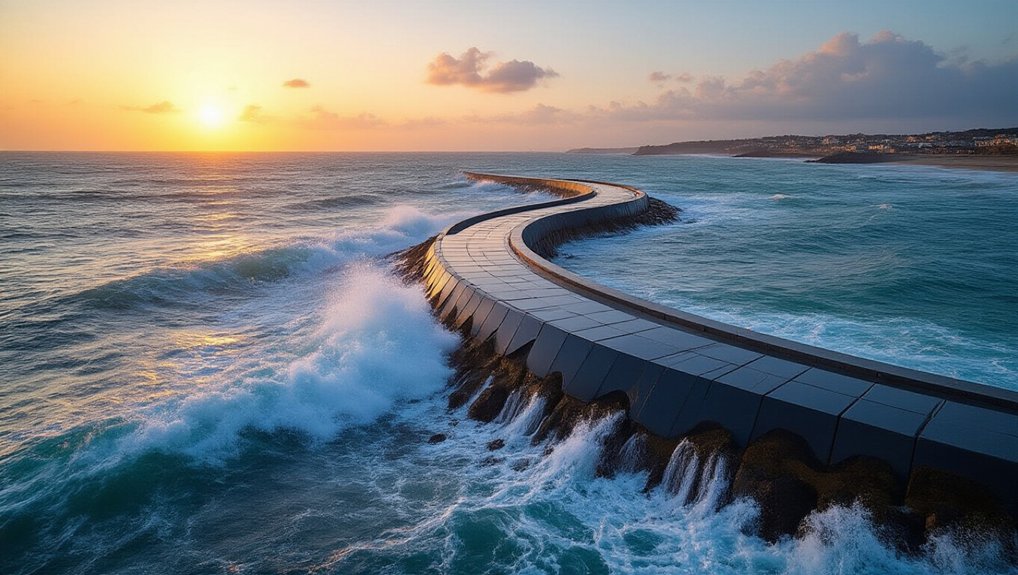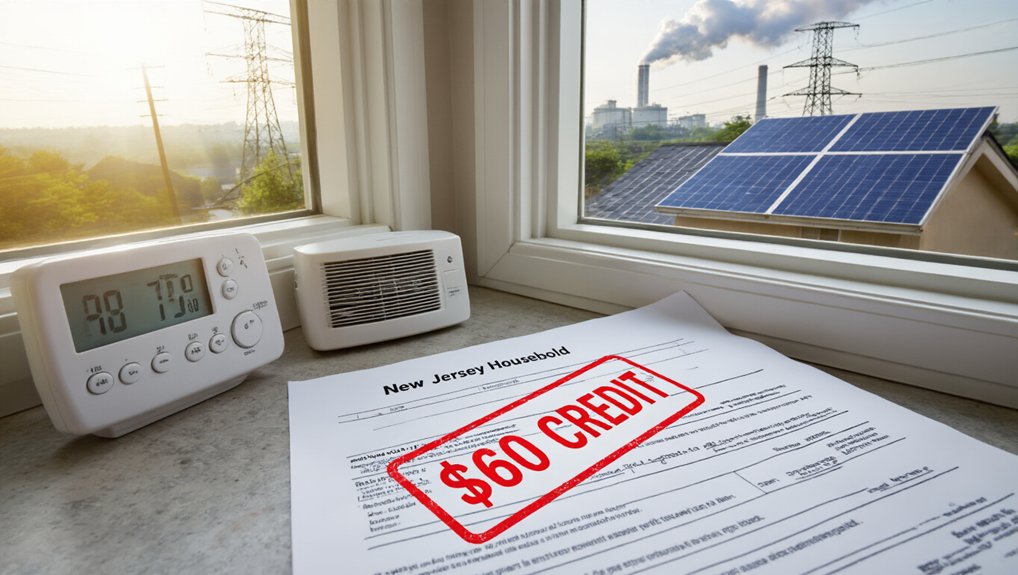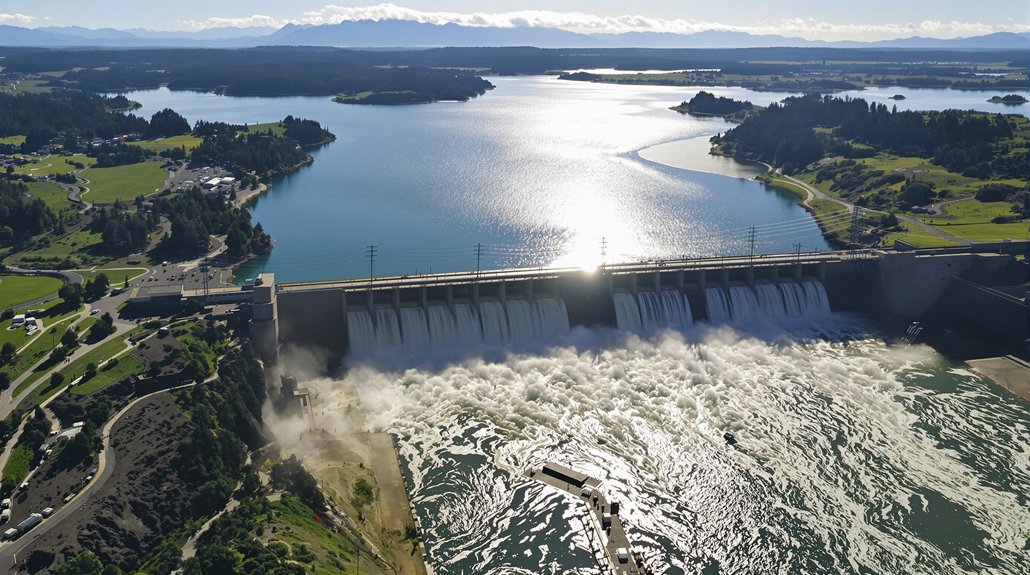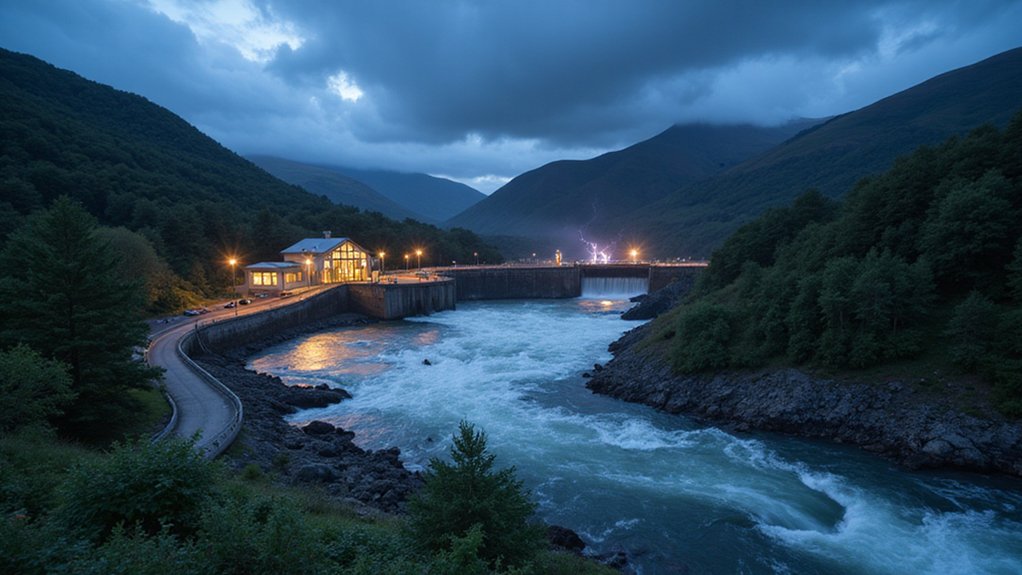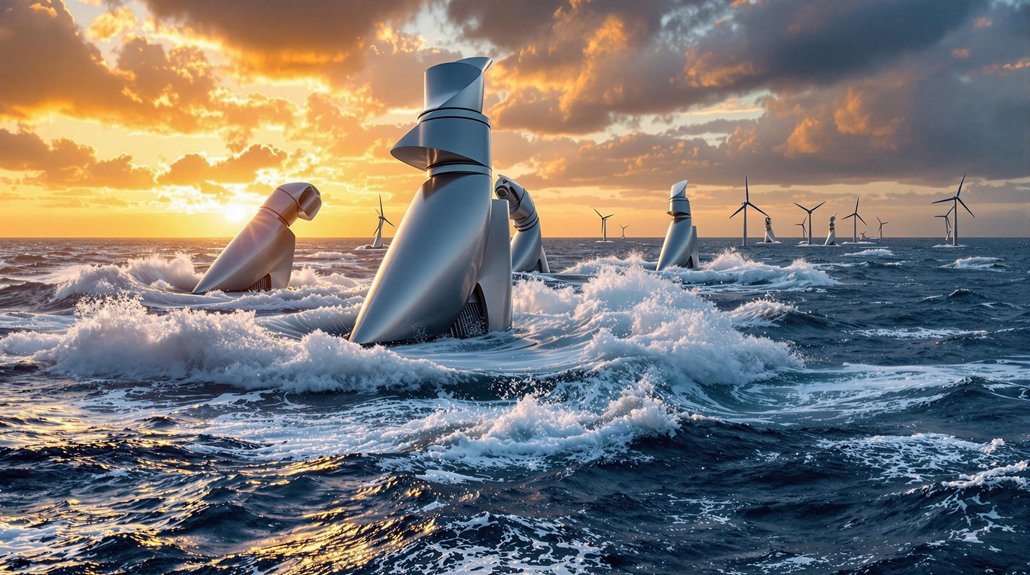While the rest of the world debates clean energy solutions, France has quietly engineered a game-changer. Their wave converter technology transforms ordinary coastal breakwaters into clean energy powerhouses. No fanfare, just results.
These aren’t your typical energy generators. The French system ditches complicated hydraulics and turbines, opting instead for Electro Active Polymers that convert wave motion directly into electricity. Genius, really. Fewer moving parts means fewer breakdowns. Who’d have thought?
The technology works by merging power conversion with the actual structure of coastal breakwaters. It’s like hitting two birds with one stone—protecting shores while pumping out electricity. Traditional breakwaters just sit there, doing one job. These upgraded versions multitask.
Breakwaters that generate power while protecting coasts? France’s two-for-one solution makes traditional designs look lazy.
On France’s Atlantic coast, where wave energy exceeds 33 kW per meter, these systems shine brightest. A single installation spanning 260 meters width by 150 meters length can generate up to 4 megawatts. That’s serious juice from something that was already going to be built anyway.
They’re completely passive systems. No maintenance crews needed to constantly fiddle with things. No oil leaks. No noisy turbines scaring away marine life. Unlike other designs, these converters are highly resistant to saltwater corrosion and biofouling which typically plague ocean-based energy systems. They just sit there, silently converting mother nature’s temper tantrums into usable power.
The most productive sites are on France’s northwestern coasts—specifically locations P7, P8, and P9, if you’re keeping score. Mediterranean installations produce less, but still contribute meaningfully to the grid.
Manufacturing is surprisingly straightforward, using roll-to-roll techniques similar to printing newspapers. Scale up? No problem. Dial it back for smaller applications? Also doable.
Unlike solar panels that take coffee breaks at night or wind turbines that stop when the air is still, these wave converters keep churning out electricity around the clock. Waves don’t quit, and neither do these devices. The projected levelized cost of energy from these systems is estimated at 0.42 euros/kWh, significantly better than early wave energy installations elsewhere. They represent an important part of the renewable energy mix that could help achieve the green revolution projections of supplying 95% of electricity needs by 2050.
France isn’t just talking about renewable energy. They’re actually doing something practical about it. Maybe the rest of us should take notes.
References
- https://www.coastalwiki.org/wiki/Wave_energy_converters
- https://www.sbmoffshore.com/sites/sbm-offshore/files/sbm-offshore/newsroom/news-and-events/pdf/sbm-offshore-technology-wave-energy-converter.pdf
- https://www.mdpi.com/2077-1312/8/11/947
- https://anr.fr/Project-ANR-14-CE05-0022
- https://www.ijsgce.com/uploadfile/2019/0215/20190215034208518.pdf
